Focusing on large, star-forming galaxies, researchers were able to measure radiation leaks in an effort to better understand how the universe evolved as the first stars were formed.
Oct 10th, 2014
Read more
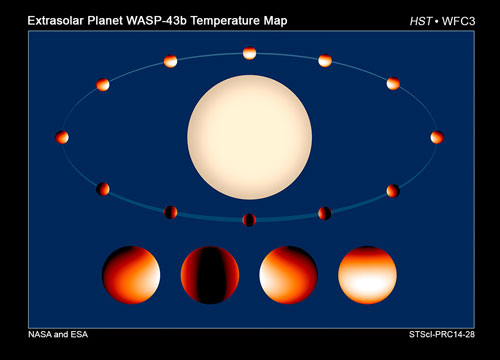 A team of scientists using the Hubble Space Telescope has made the most detailed global map yet of the glow from a planet orbiting another star, revealing secrets of air temperatures and water.
A team of scientists using the Hubble Space Telescope has made the most detailed global map yet of the glow from a planet orbiting another star, revealing secrets of air temperatures and water.
Oct 9th, 2014
Read more
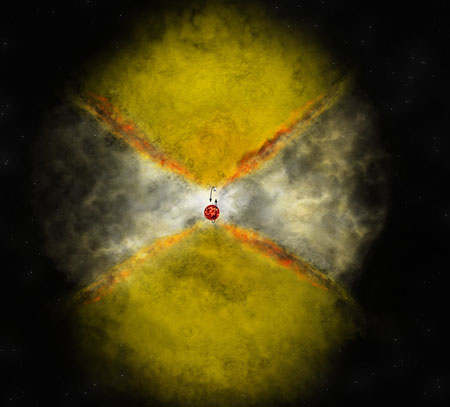 Gamma rays are the highest-energy form of radioactive waves known in the universe. However, how they're made and where they come from have been a bit of a mystery. But now a team of researchers has made a discovery that may shed some light on the subject.
Gamma rays are the highest-energy form of radioactive waves known in the universe. However, how they're made and where they come from have been a bit of a mystery. But now a team of researchers has made a discovery that may shed some light on the subject.
Oct 9th, 2014
Read more
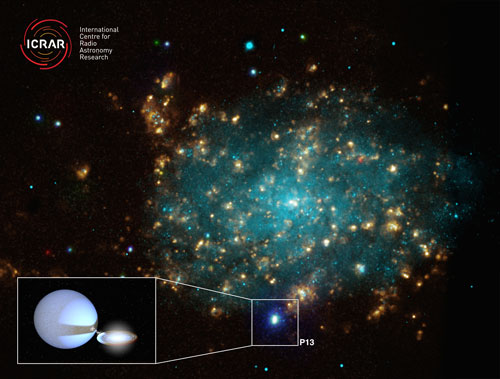 Astronomers have discovered a black hole that is consuming gas from a nearby star 10 times faster than previously thought possible. The black hole - known as P13 - lies on the outskirts of the galaxy NGC7793 about 12 million light years from Earth and is ingesting a weight equivalent to 100 billion billion hot dogs every minute.
Astronomers have discovered a black hole that is consuming gas from a nearby star 10 times faster than previously thought possible. The black hole - known as P13 - lies on the outskirts of the galaxy NGC7793 about 12 million light years from Earth and is ingesting a weight equivalent to 100 billion billion hot dogs every minute.
Oct 9th, 2014
Read more
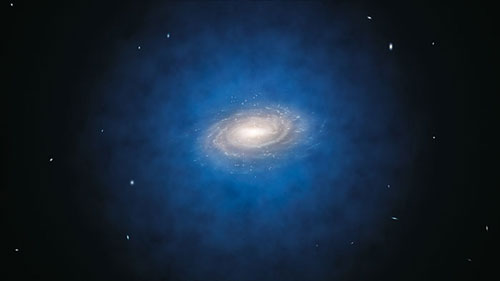 A new measurement of dark matter in the Milky Way has revealed there is half as much of the mysterious substance as previously thought.
A new measurement of dark matter in the Milky Way has revealed there is half as much of the mysterious substance as previously thought.
Oct 9th, 2014
Read more
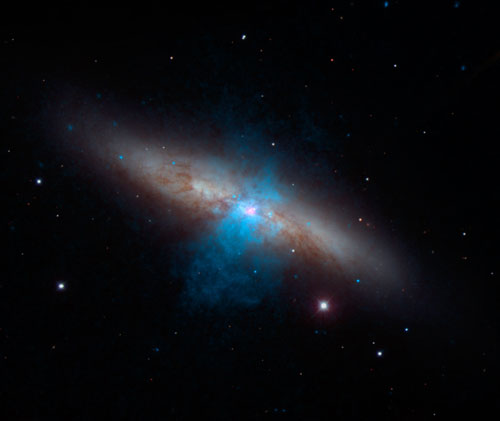 Astronomers have found a pulsating, dead star beaming with the energy of about 10 million suns. This is the brightest pulsar ever recorded.
Astronomers have found a pulsating, dead star beaming with the energy of about 10 million suns. This is the brightest pulsar ever recorded.
Oct 8th, 2014
Read more
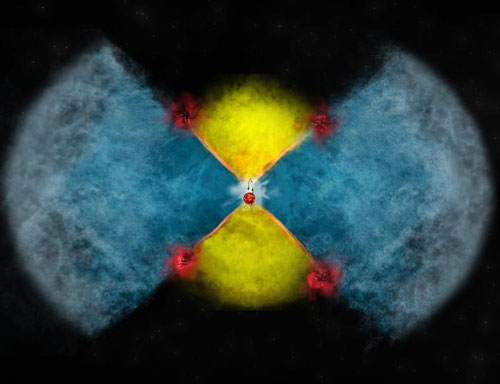 An international team of astronomers has been able to see into the heart of an exploding star, by combining data from telescopes that are hundreds or even thousands of kilometers apart.
An international team of astronomers has been able to see into the heart of an exploding star, by combining data from telescopes that are hundreds or even thousands of kilometers apart.
Oct 8th, 2014
Read more
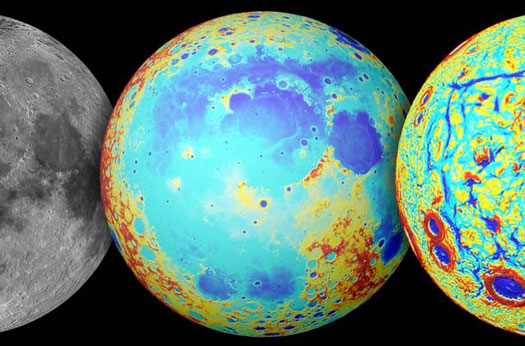 Researchers find that a volcanic plume, not an asteroid, likely created the moon's largest basin.
Researchers find that a volcanic plume, not an asteroid, likely created the moon's largest basin.
Oct 2nd, 2014
Read more
The increasing number of small CubeSat satellites being launched combined with a relaxed attitude to debris mitigation could lead to hazards for all space users unless preventative measures are taken, warns a leading space debris expert.
Sep 30th, 2014
Read more
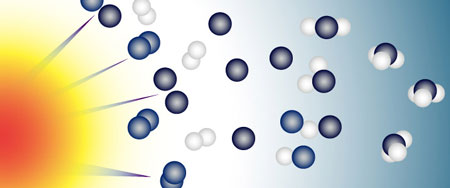 Chemical fingerprints of the element nitrogen vary by extremes in materials from the molecules of life to the solar wind to interstellar dust. Ideas for how this great variety came about have included alien molecules shuttled in by icy comets from beyond our solar system and complex chemical scenarios. New experiments using a powerful source of ultraviolet light have shown that no extra-solar explanation is needed and the chemistry is straight forward.
Chemical fingerprints of the element nitrogen vary by extremes in materials from the molecules of life to the solar wind to interstellar dust. Ideas for how this great variety came about have included alien molecules shuttled in by icy comets from beyond our solar system and complex chemical scenarios. New experiments using a powerful source of ultraviolet light have shown that no extra-solar explanation is needed and the chemistry is straight forward.
Sep 30th, 2014
Read more
Astronomers have found two new Jupiter-sized extra-solar planets, each orbiting one star of a binary-star system.
Sep 30th, 2014
Read more
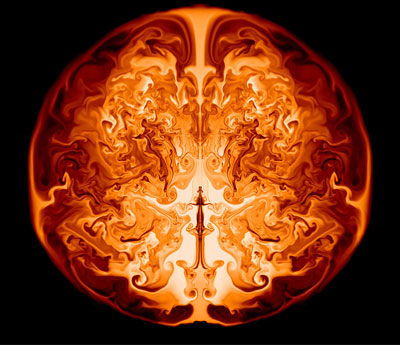 Certain primordial stars - those 55,000 and 56,000 times the mass of our sun, or solar masses - may have died unusually. In death, these objects would have exploded as supernovae and burned completely, leaving no remnant black hole behind.
Certain primordial stars - those 55,000 and 56,000 times the mass of our sun, or solar masses - may have died unusually. In death, these objects would have exploded as supernovae and burned completely, leaving no remnant black hole behind.
Sep 29th, 2014
Read more
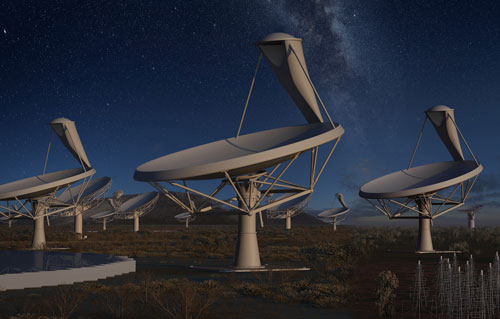 Scientists are to turn the Moon into a giant particle detector to help understand the origin of Ultra-High-Energy (UHE) cosmic rays - the most energetic particles in the Universe.
Scientists are to turn the Moon into a giant particle detector to help understand the origin of Ultra-High-Energy (UHE) cosmic rays - the most energetic particles in the Universe.
Sep 26th, 2014
Read more
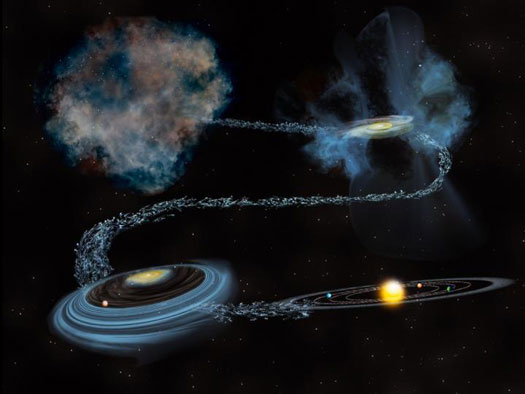 Water was crucial to the rise of life on Earth and is also important to evaluating the possibility of life on other planets. Identifying the original source of Earth's water is key to understanding how life-fostering environments come into being and how likely they are to be found elsewhere. New work found that much of our solar system's water likely originated as ices that formed in interstellar space.
Water was crucial to the rise of life on Earth and is also important to evaluating the possibility of life on other planets. Identifying the original source of Earth's water is key to understanding how life-fostering environments come into being and how likely they are to be found elsewhere. New work found that much of our solar system's water likely originated as ices that formed in interstellar space.
Sep 25th, 2014
Read more
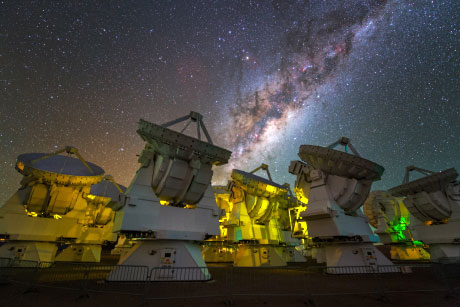 Hunting from a distance of 27,000 light years, astronomers have discovered an unusual carbon-based molecule contained within a giant gas cloud in interstellar space. The discovery suggests that the complex molecules needed for life may have their origins in interstellar space.
Hunting from a distance of 27,000 light years, astronomers have discovered an unusual carbon-based molecule contained within a giant gas cloud in interstellar space. The discovery suggests that the complex molecules needed for life may have their origins in interstellar space.
Sep 25th, 2014
Read more
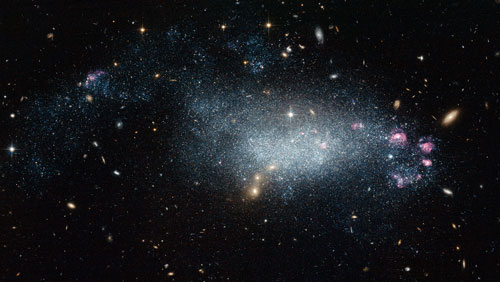 Astronomers usually have to peer very far into the distance to see back in time, and view the Universe as it was when it was young. This new NASA/ESA Hubble Space Telescope image of galaxy DDO 68, otherwise known as UGC 5340, was thought to offer an exception. This ragged collection of stars and gas clouds looks at first glance like a recently-formed galaxy in our own cosmic neighborhood. But, is it really as young as it looks?
Astronomers usually have to peer very far into the distance to see back in time, and view the Universe as it was when it was young. This new NASA/ESA Hubble Space Telescope image of galaxy DDO 68, otherwise known as UGC 5340, was thought to offer an exception. This ragged collection of stars and gas clouds looks at first glance like a recently-formed galaxy in our own cosmic neighborhood. But, is it really as young as it looks?
Sep 25th, 2014
Read more
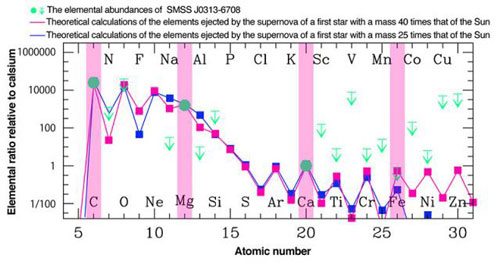 In a new study, researchers point out that the elemental abundance of the most iron-poor star can be explained by elements ejected from supernova explosions of the universe's first stars. This reveals that massive stars, which are several tens of times more immense than the Sun, were present among the first stars.
In a new study, researchers point out that the elemental abundance of the most iron-poor star can be explained by elements ejected from supernova explosions of the universe's first stars. This reveals that massive stars, which are several tens of times more immense than the Sun, were present among the first stars.
Sep 24th, 2014
Read more
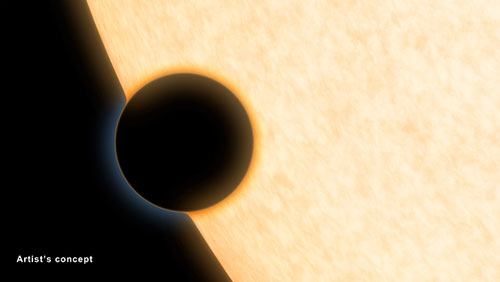 Astronomers using data from three space telescopes - Hubble, Spitzer and Kepler - have discovered clear skies and steamy water vapor on a gaseous planet outside our solar system. The planet is about the size of Neptune, making it the smallest planet from which molecules of any kind have been detected.
Astronomers using data from three space telescopes - Hubble, Spitzer and Kepler - have discovered clear skies and steamy water vapor on a gaseous planet outside our solar system. The planet is about the size of Neptune, making it the smallest planet from which molecules of any kind have been detected.
Sep 24th, 2014
Read more

 Subscribe to our Space Exploration News feed
Subscribe to our Space Exploration News feed













